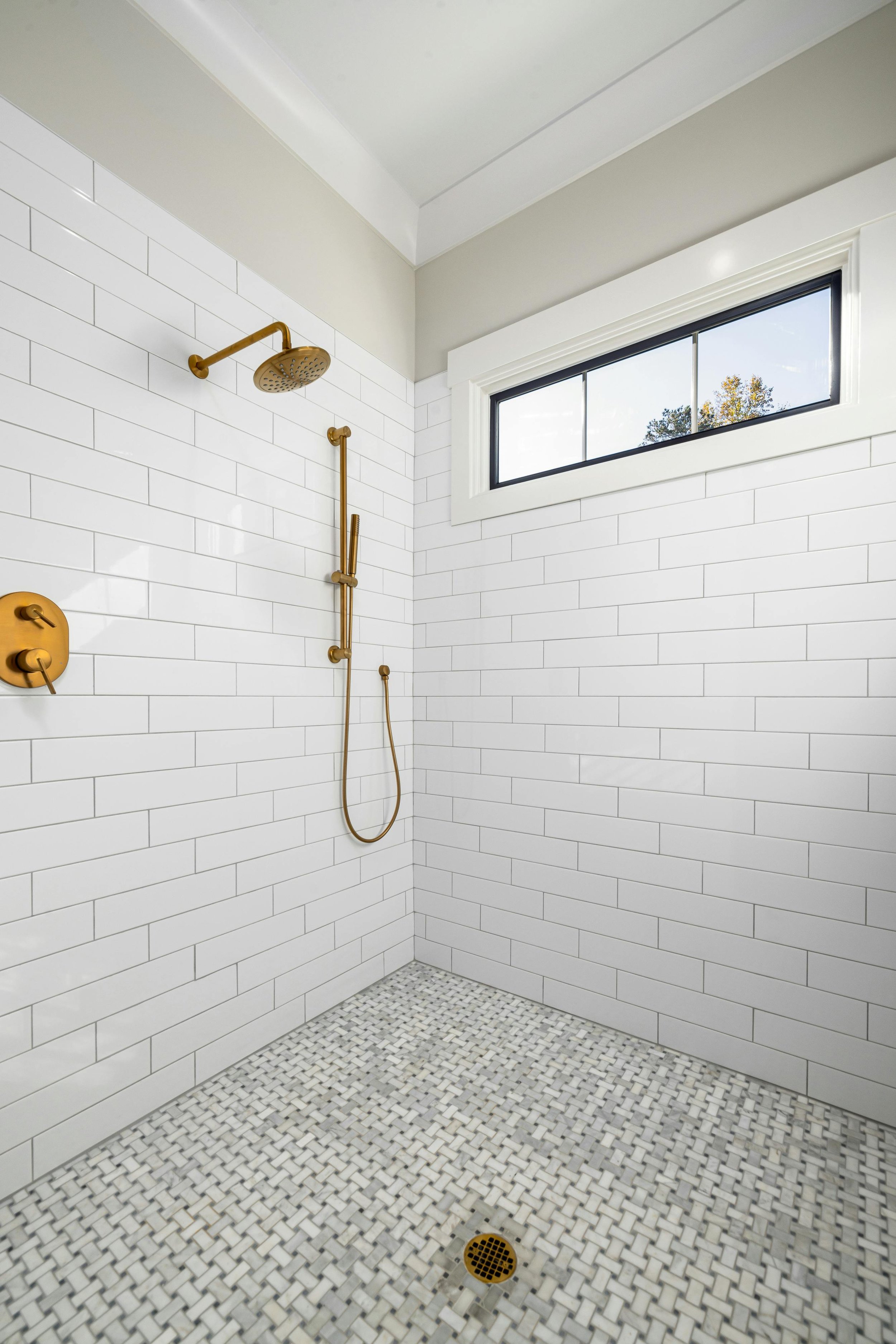How to Plumb a Shower Drain: Step-by-Step Guide
Learn how to plumb a shower drain with our comprehensive step-by-step guide. Discover essential tools, techniques, and tips to complete your DIY plumbing project with confidence and ease!
Installing a new shower can be exciting, but when it comes to plumbing the shower drain, things can get a little tricky. But don't worry—whether you're a seasoned DIYer or just getting started, we’re here to break down the process in simple steps that’ll have you handling the task like a pro. In this "How to Plumb a Shower Drain: Step-by-Step Guide," we’ll cover everything you need to know, from gathering the right tools to ensuring a leak-free finish. So, roll up those sleeves, and let's get plumbing!
Why Is Proper Shower Drain Plumbing Important?
Before diving into the nitty-gritty, let’s quickly chat about why plumbing your shower drain properly matters. A well-installed drain ensures efficient water flow, prevents leaks, and keeps your bathroom smelling fresh. After all, nobody wants water pooling up around their feet—or worse, a flooded bathroom. By taking the time to do it right, you’re saving yourself a lot of headaches down the road.
Tools and Materials You'll Need
To plumb a shower drain, you’ll need some essential tools and materials. Here's a quick list:
PVC drain pipes (typically 2 inches)
P-trap
Shower drain assembly
Plumber’s tape
Pipe cement or glue
Measuring tape
Pipe wrench or adjustable wrench
PVC primer
Hacksaw (for cutting pipes)
Sandpaper or deburring tool (to smooth pipe edges)
Spirit level (to check for slope)
Got everything ready? Awesome! Let’s move on to the main event: plumbing that shower drain.
How to Plumb a Shower Drain: Step-by-Step Guide
Step 1: Plan Your Layout
Before you start working with pipes, plan your layout carefully. Determine the location of your shower and map out the route for the drain pipes. Ensure that you connect the shower drain to the main drain line, maintaining a slope of about 1/4 inch per foot. This slope is essential for proper water flow and drainage, preventing any potential clogs or water pooling.
Step 2: Prepare the Drain Location
Once you know where the drain will be located, you'll need to cut a hole in the subfloor to accommodate the shower drain assembly. Use your measuring tape to mark the exact spot, and then cut carefully with a saw.
Pro tip: Always double-check your measurements before cutting to ensure precision and avoid costly mistakes. Taking a moment to verify dimensions can prevent errors and save time, resulting in a smoother and more successful project. Accurate measurements are key to achieving a professional and polished finish.
Step 3: Install the Shower Drain Assembly
Now comes the fun part—installing the shower drain. Take your drain assembly and fit it into the hole you’ve just cut. Use plumber’s tape on any threaded connections to create a watertight seal, and ensure the drain fits snugly.
Important: Make sure the top of the drain is flush with the surface of the shower base for proper drainage.
Step 4: Attach the P-Trap
The P-trap is essential in plumbing because it prevents sewer gases from coming back into your bathroom. To install it:
Measure and cut the PVC pipes to fit between the drain and the P-trap.
Use a hacksaw to cut the pipes to the correct length.
Smooth any rough edges with sandpaper or a deburring tool.
Attach the P-trap to the drainpipe, ensuring everything is secure and aligned correctly.
Pro tip: Double-check the slope to ensure water flows smoothly toward the main drain line. Proper grading is essential to prevent standing water and potential drainage issues. A well-maintained slope directs water effectively, minimizing the risk of pooling and ensuring efficient drainage.
Step 5: Connect the Pipes
With the P-trap installed, proceed to connect the pipes to the main drain line. Measure and cut the pipes as needed, ensuring they fit correctly. Before applying glue, dry-fit the pipes to check alignment and ensure a proper connection. This step helps prevent any issues once the glue sets and ensures a leak-free installation.
Once you’re happy with the fit:
Apply PVC primer to the ends of the pipes and inside the fittings.
Follow up with PVC cement, ensuring a solid, leak-proof connection.
Press the pipes together and hold for a few seconds to allow the glue to set.
Pro tip: Always work quickly with PVC cement, as it dries fast! Apply the cement to both surfaces and join them promptly to ensure a strong bond. The rapid drying time means you have a short window to make adjustments, so be prepared and efficient to avoid mistakes.
Step 6: Test for Leaks
Before wrapping up your installation, it’s essential to test the system for leaks. Turn on the shower and let the water run for a few minutes to check for any issues. Inspect all connections carefully for signs of dripping or leakage. If you spot any leaks, tighten the connections as needed or apply additional plumber’s tape to seal the joints effectively. Ensuring everything is leak-free will prevent future water damage and ensure your system operates smoothly.
Step 7: Final Touches
Once you’ve verified that there are no leaks, complete the installation by securing the drain assembly firmly in place. Use a spirit level to double-check that the drain and pipes maintain the correct slope for optimal water flow. This final adjustment ensures that water flows smoothly toward the main drain line without any pooling. With everything properly aligned and secured, you’ve successfully plumbed your shower drain and are ready to enjoy your newly functional bathroom setup like a pro!
Troubleshooting Common Shower Drain Issues
Sometimes, things don’t always go according to plan. Here are a few common issues you might encounter and how to fix them:
Slow Drainage
If you notice that water is draining slowly from the shower, the issue might be an improper slope in the pipes or a blockage. First, verify that the pipes have the correct slope of about 1/4 inch per foot to ensure proper flow. Next, inspect for any debris or obstructions that could be hindering drainage and clear them as needed. Addressing these factors will help restore efficient water flow.
Leaking Connections
Leaks commonly happen when connections aren’t tight enough or plumber’s tape isn’t applied correctly. If you detect any leaks, start by disassembling the affected connection. Reapply plumber’s tape to ensure a proper seal, then tighten the connection securely. This should resolve the issue and prevent further leaking, ensuring a watertight fit.
Sewer Odors
A sewer gas smell often indicates a problem with the P-trap or inadequate venting. Check to ensure the P-trap is installed correctly and that there’s sufficient water in the trap to create a proper seal. Additionally, verify that your venting system is functioning properly to prevent gases from entering your space. Addressing these issues should eliminate unpleasant odors and maintain a fresh environment.
Conclusion
Plumbing a shower drain might seem like a daunting task, but with this "How to Plumb a Shower Drain: Step-by-Step Guide," you're well-equipped to tackle the job. Remember, careful planning, proper slope, and securely connected pipes are the key to success. Whether you’re renovating a bathroom or building a new shower from scratch, understanding how to plumb a shower drain ensures your project goes off without a hitch. So grab your tools and get started—your shower drain (and bathroom) will thank you!
Frequently Asked Questions
Can I plumb a shower drain by myself?
Absolutely! With the right tools and a little patience, plumbing a shower drain is a DIY-friendly project. Just follow this "How to Plumb a Shower Drain: Step-by-Step Guide," and you'll be good to go.
What’s the purpose of a P-trap?
A P-trap blocks sewer gases from escaping into your bathroom. It also traps debris, preventing clogs from forming further down the drain line.
How much slope does a shower drain pipe need?
The general rule is 1/4 inch of slope per foot of pipe. This ensures that water flows smoothly without pooling or backing up.
Do I need a permit to install a shower drain?
This varies depending on your local building codes. It’s always best to check with your local municipality to determine if you need a permit for plumbing work.
What happens if I don’t have enough slope in the drain pipes?
Without enough slope, water won’t drain properly, leading to slow drainage or even backups. It’s crucial to maintain the recommended 1/4 inch per foot slope.






